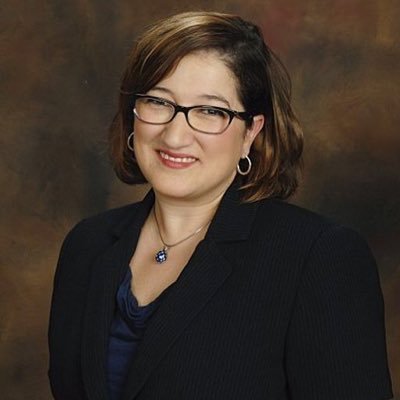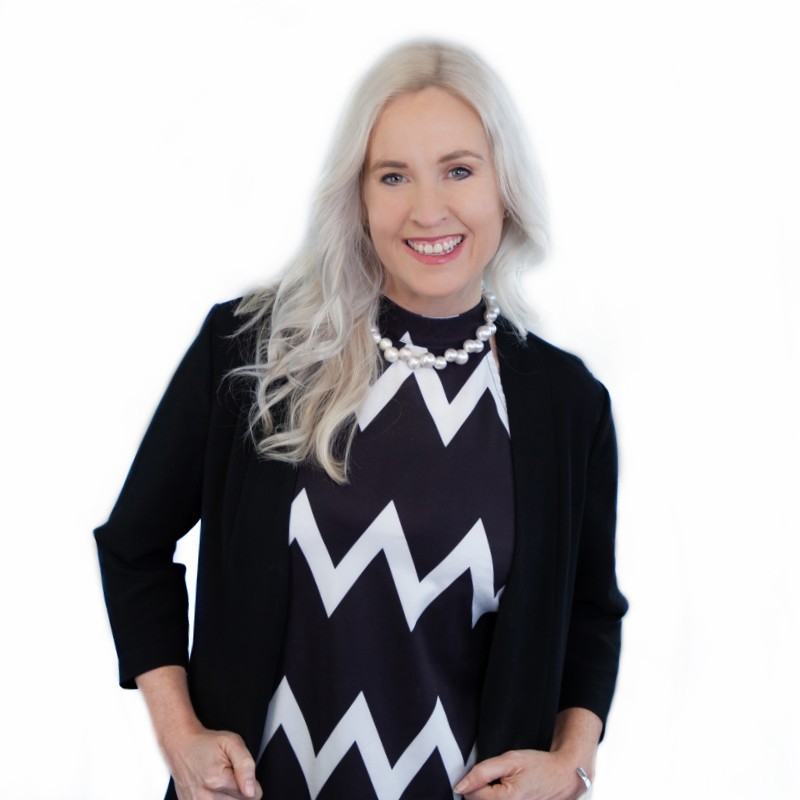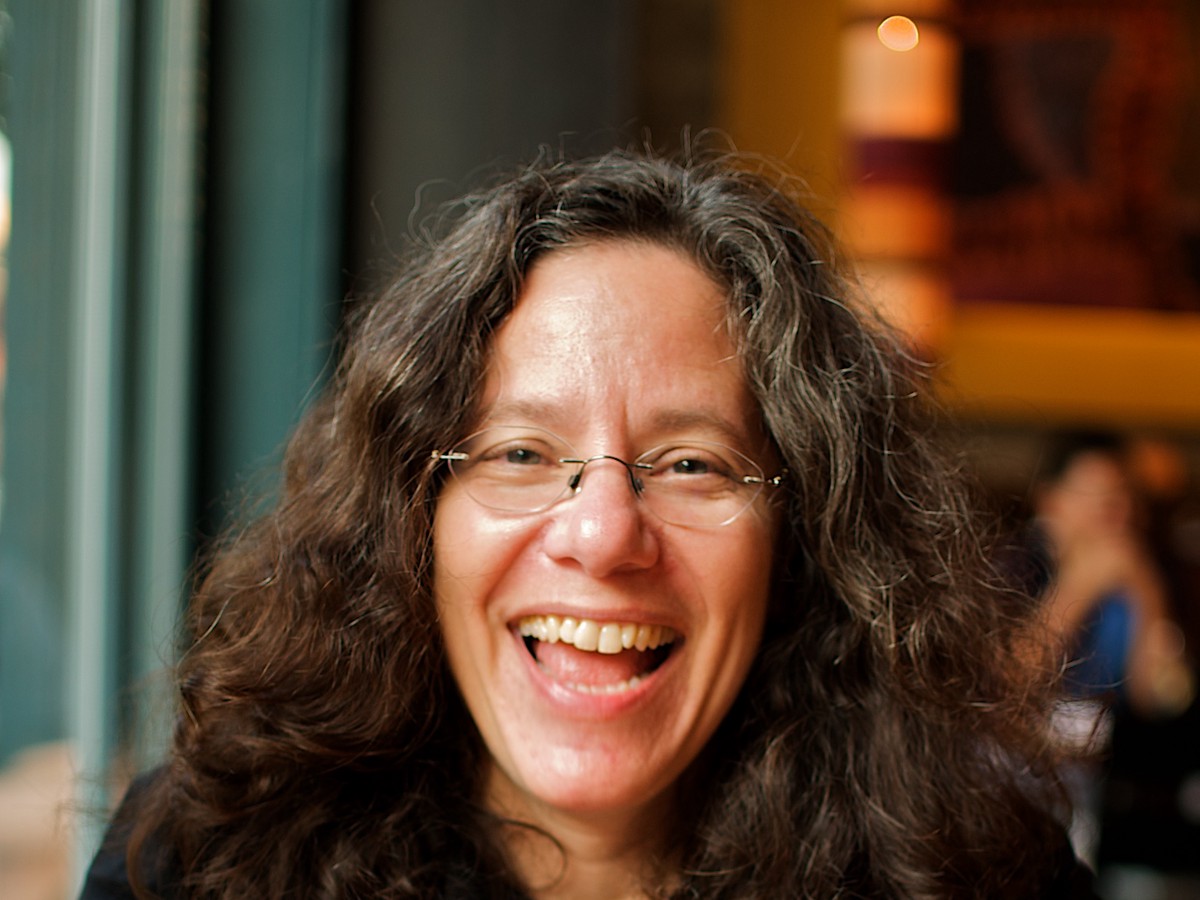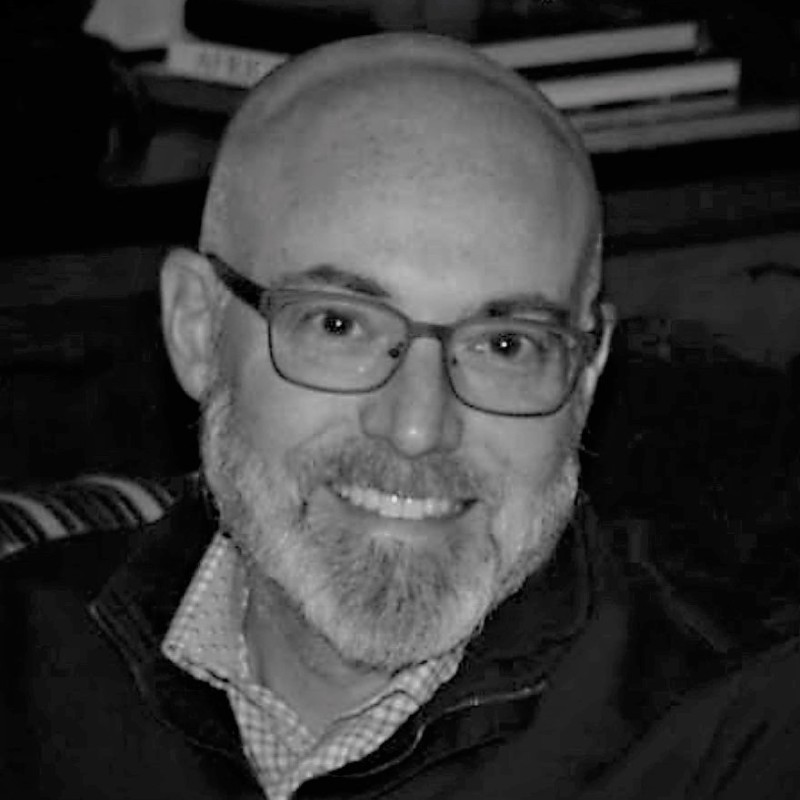
Today, our guest is Amy C. Waninger. She’s the founder and CEO of Lead at Any Level and this episode is Work Minus Papercuts. Hi, Amy. How are you?
I’m great. How are you doing?
Doing excellent. Very excited to speak to you about this topic of papercuts. But we’re talking about diversity and inclusion broadly. So, why don’t you start off telling us how you got into that field?
Sure. So, I actually went to college. The first time around, I wanted to be an attorney for the ACLU. And this was an evolution after changing my major about 400 times because I had no idea what people did in college. I was a first generation college student. But I heard about the ACLU and I thought that would be fun. I would like to help people like that. And then my last year of my undergraduate degree, I was preparing to take the LSAT and I found out how much law school was going to cost and the meaning of the phrase pro bono and I decided that law school was not going to be in my immediate future.
So, I took some time off. I finished the degree. I went and got a job at the mall that I was way overqualified for. And after a couple dead end jobs, I went back to school for a computer science degree because that was where people were hiring at that time. So, I kind of took a 20-year departure from my passion if you will. I got to solve problems with code and do all that sort of stuff. But maybe seven years ago, I was working for a company that hired a chief diversity officer and I was reading about what her job was and what she would be doing and I thought, “Oh, my gosh. There’s a way to get paid to do what I want to do which is help people get access to opportunity.” And I didn’t have a background in HR and I really didn’t know how to get started but I knew that I wanted to do work in that area.
So, I volunteered everywhere I could and read and read and researched as much as I could about that kind of work and what was being done in corporate America to that effect. I was at a conference in 2016 and really enjoyed the conference. It was the very first conference I’d ever been to professionally and I wanted to do something to give back to that organization because I felt like I had gotten so much out of the event, although, I went into it terrified about networking and not really knowing what to expect. But by the time I was done, I was really all in and very committed to wanting to contribute something to this organization in the insurance industry.
So, when I got home, I found out how to submit a proposal for the following year and I put together just a few bullet points on what did I want to talk about. And I wanted to talk about diversity and inclusion in the insurance industry. And just a couple bullet points and a paragraph and then this horrible thing happened. They accepted my proposal.
So, I had to go from that to an hour’s worth of content and it was in diving into the research and the structure of that, trying to find something that all of these different people in the audience would have in common because it was everybody from claims adjusters to people who own their own insurance agencies up to executives at major insurance carriers. So, really, people all across the industry and at different stages of their careers and I thought the most important connect point for all of those people, the thing that they all had common was that they all needed a strong network for their careers or their companies or both and where better to start demonstrating our commitment to diversity and inclusion than within our own networks?
Something that I really enjoy about your work is that you kind of made a name for yourself and started with the idea of the network that you have, not necessarily about who you’re hiring or different things, but just you personally, who’s around you, who you’re friends with, who do you know in the industry. And I think that reflects onto us, too, as we think about it. Most people are in favor of diversity and inclusion. No one’s going to put it down. But when we look at our lives, they may not really reflect it. So, what were some of the early steps that you took to really diversify your own network?
Well, this all came about because I was writing this hour long program for one conference. I was brainstorming and I was just writing down words as they came to me, and I was thinking about networks in terms of diversity and these acronyms sort of jumped out on the page at me. And the first one was champ. And so, I created this concept called a champ network which are the five critical connections you need for your career. And each letter in champ stands for a type of connection.
For example, C is customer or constituent. H is someone you’ve hired or helped to get a job. Because I wanted to make this relevant, not just to hiring managers, but to everyone. And so, I started looking at who’s in my network and I wrote them down on a sheet of paper who would be in that champ network.
And then I had another acronym that sort of popped off the page and that was the word ignore. And I added another G to ignore because there were some different elements that I wanted to add in. But the I in ignore stands for industry. So, the very first thing I did was look at who are my top five connections that I chose in my network. How many of them are outside of my own industry? And the answer was zero. And I thought that’s a problem because having come from the tech sector, my job changed every six months because things change, right? Companies would staff up and then they would lay off or any number of things. I worked for a company that lost its funding. I worked for a company that lost its major client. So, I was constantly having to look outside of my work group to make sure I knew people around town and could connect with them if something happened which it frequently did. But then as I got a little further away from the technical work and into management, and especially within the insurance industry, I became very insular in that industry and I saw that as a problem.
Then I moved on to how many of the people in my network are a different generation than me and the answer was not very many. And then I went to gender identity and the answer was not very many. And then I got to national origin or native language in the answer was zero again. And I started to see this picture emerge that made me feel like a hypocrite, frankly, because I’d been volunteering and doing all this work in diversity and inclusion and my own network did not demonstrate a commitment to diversity and inclusion. And so, really, that moment was really what changed my career because I realized I had to make a change. I was part of the problem and I’d never seen myself that way before that moment.
Yeah. That’s a really powerful way to start off and to think about these topics. Let’s get into the topic we’re discussing today which is Work Minus Papercuts. So, what is a papercut in your definition? Why are we talking about it?
So, before I explain what a papercut is, I just want to do a little thought experiment with you, if that’s okay, Neil.
Yeah. Let’s do it.
So, if you and I work together and you notice that the day we met, when I shook your hand and we said our pleasantries and parted, you went back to your desk and you had a papercut in the webbing between your fingers. How would you feel about that?
Annoyed.
Annoyed. Okay. And if the next day, we met in the hallway and we exchanged pleasantries again and we talked a little bit about a project that we were going to be working on together and you went back to your desk and you had another papercut. How would you feel?
Well, I would be seeing the pattern and thinking about how I could avoid you the next time.
Okay. Perfect. So, let’s say the third day it happens again and you come to me and you say, “Amy, gosh, every time we talk I keep ending up with these papercuts.” And if I were to say something to you, like, “I’m sure that’s all in your head,” or, “You’re really sensitive,” or, “You’re overreacting,” or, “Why are you so angry?” That probably would not sit well with you, right? And it wouldn’t do anything to help this injury that I’ve probably caused you in our interactions, and certainly, there’s no promise that they’re not going to continue in the future.
Well, there’s this concept called microaggressions and we all encounter these from time to time, some of us more frequently than others, and they tend to happen a lot when we’re “the other” or “the only” in a group. And I liken these microaggressions to papercuts. It’s tiny things that people do, maybe they don’t even realize they’re doing it, that are hurtful and people wonder, when they’ve received one of these inner personal papercuts, they wonder, “Do I say something and potentially make it worse or do I just deal with it on my own?”
And the reason I use this analogy is because it’s really easy to see how you or I would avoid someone if we were having that experience with them over and over and over again. And so, the fact that we’re doing this in terms of people’s feelings is no different to our reputation and our relationships than if we were doing it to them physically.
Yeah. Absolutely. So, you used the term microaggression, too, which I think we’re all familiar with. But a lot of times, I think especially as you become more aware of what a microaggression is, that “micro” starts to stand out. Like, is this really a small thing or is it not? Because a lot of times, it’s almost as a way to say, “Okay. You didn’t really maybe mean to say that but it actually was very offensive or it came across a lot.” So, speaking to somebody who’s in the majority culture, who’s in that kind of position of power, how can you make somebody aware that the things that they’re saying, the things they’re doing maybe is a papercut or maybe is a much deeper cut as well?
Well, I think the first thing to understand is that we’re all guilty of this. We’ve all wished we could hide under the desk when we’ve said something we shouldn’t, right? We’ve all inadvertently offended someone at some point. So, there’s a lot of commonality in that. What I would recommend, though, if someone does point out to you that you’re giving these kinds of papercuts to people at work or even in your personal life, don’t argue. Don’t deny that you’ve done it. Don’t blame the person who’s telling you or the person who was the victim of your hostility, however unintended. The best thing to do is say, “Thank you for bringing that to my attention. Thank you for making better. I’m going to work on this.” And if that’s all you do in that moment, you’ve built back some of that trust.
Yes. That’s a big thing. Obviously, it takes a lot of practice, a lot of humility to be able to do that and I think that the word practice is important because we can’t just automatically say, “Okay. I’m going to be more inclusive. I’m going to be more aware of these things.” It’s a much longer process, right?
Absolutely. And the more we get uncomfortable, the more we stretch out our networks and we start to talk to people who are different, people who have different expectations of social norms, different customs, different ways of interacting, they eat different foods, they maybe speak a different language or speak in a different intonation, or they have a disability and maybe that makes us uncomfortable. We’re not sure how to deal with that.
What we need to realize is that our discomfort is not their fault and it’s not their problem. It’s our problem and it’s something that we need to deal with. And of course, we’re going to make mistakes but I think it’s good to be up front and say, “I’ve never met anyone like you before but I really want to get to know you better, and if in the process I say or do something that’s offensive or that hurts you, would you please tell me so that I’m sure I never do it again?”
Yeah. I think one response to this that I would hear from a lot of other people is that to say, “Look, I’m going to say something dumb at some point, something stupid is going to come out of my mouth. So, maybe it’s better if I just shut up and I don’t say anything about it and I just kind of close off and let them be them and me be me. I’ll exist over here. Why is that not the right approach?
Well, you don’t learn much that way, first of all. But second, opportunity can come from anywhere, and if you really want to create opportunities for yourself and for others, you need to know who has information, who has access to those opportunities, and it’s not just people who look like you. And I think it is unfortunate that people tend to worry about saying the wrong thing so they don’t say anything at all.
But I think about times when I’ve been in a place where I’ve been new or different or maybe I dressed inappropriately for an event, you know, I showed up super formal and it was a real casual event or vice versa. And I feel very different and very uncomfortable and maybe there are 100 people in the room who are perfectly fine. The one person that comes over and talks to me anyway, I’m going to learn a lot about and they’re going to learn a lot about me and they’re going to get an opportunity that nobody else in the room has because they’re going to learn what I know and what I could potentially do for them.
That’s a really great way to think about how to approach them is from what you’re going to learn from those situations.
And there’s nothing magic about me, Neil. I mean, every person has this in them, right? Every person has something to offer you.
Yeah. But I think, like you said, it takes us practice to learn that, to get over that hump. You have to do it a few times to really start to believe that about yourself and believe that you can go up and talk to somebody, and just like you said, accept the fact that you’re probably going to make a mistake, but it’s better to be open and honest about it with somebody and to be a source of dialogue than to just close off everything.
Absolutely. And I want to make sure that I’m clear, though, that it’s not everyone else’s job to educate us. We have access to a ton of information. We can Google just about anything and learn why something is offensive, what not to say, how to approach a certain situation, what’s appropriate etiquette when you meet someone in a wheelchair or what’s appropriate etiquette for handshakes when someone doesn’t have a right arm, what are appropriate norms for people who are here from Asian countries and not all Asian countries are the same, what are some common microaggressions experienced by black people in the United States or by Hispanic people in the United States. And we can educate ourselves on that before we ever even get to a point where we’re talking to people who are maybe different from us so that we know what not to say and we don’t make those mistakes to begin with.
Is it a challenge, too, though, if we overeducate ourselves in that way without actually talking to somebody individually? What kind of balance is there between if I hire somebody who has a disability who’s on my team and I feel like I’ve read two, three books on it, I researched these things online, but I’ve never actually talked to that person about what offends them or what doesn’t offend them. What’s the right balance between those things?
Well, I think having a general understanding is good but you can’t know an individual person by knowing generalizations because every person is different. So, what I would recommend in a case like that is to say, “Hey, Neil. I’m really glad you’re here on this team and I want to make sure that you feel included and welcome. Would you please let me know how I can do that?”
Nice. That’s a great way to start. Now, let’s shift the discussion just a little bit. Let’s say you’re practicing this. You’re active in it. You’re challenging your networking. You’re challenging the things you’re going on. But you start to notice your colleagues and other people who are like you or who are in your culture who are acting out in these ways or giving papercuts to other people. What’s the right response in that situation? How do you stand up in those cases?
So, I think it’s important to not talk to the person who’s been injured first, to not go to them and and say, “Oh, I saw that and I I felt really bad about that,” because that doesn’t do that person any good. It’s like saying, “Oh, I saw someone robbing you and I felt really bad for you.” That doesn’t help them, right? What helps them is an intervention. So, you need to step up and you need to say, “I know you probably didn’t intend it this way but what you said was really offensive,” or perhaps, “Did you really mean what you just said? Because here’s what I heard.”
And a lot of times, I’ll wait and I’ll pull someone aside after and say, “I think you may need to clean up part of this conversation with the team or with this individual and let me tell you why,” and usually the person is mortified because what they thought they said and what they intended didn’t match what other people heard and that gives them an opportunity to go make it right.
Now, if somebody’s doing something like this over and over and over and they know that it’s a problem and they don’t correct it and you tell them it’s a problem and they just keep going, I think it’s time to have a real conversation with them, their manager, with human resources about why are they persisting in being toxic in an environment because people will forgive a mistake, and especially if you’re in charge of the group, if you’re the manager, they look to you for leadership and if you’re allowing someone to constantly injure people on your team, that’s going to erode trust with everyone on your team.
So, Amy, you’ve been doing this kind of work for a while. Has your job gotten easier over the last 5 to 10 years or has it become harder? I would say easier maybe because our climate is shifting a little bit. We’re trying things. At least it seems like people are trying. But also we’re becoming more aware of more things we didn’t know. So, do you feel like it’s easier or harder than it was?
I think it’s the same level of difficulty in different ways because I’m constantly learning, too. I make mistakes all the time. And then that tells me that I’m growing, that I’ve learned something new, that I’ve tried something different, that I’ve connected with someone with a different perspective than I have before, or I’ve built enough trust with someone with a different perspective that they pointed out to me that I made a mistake because sometimes we make mistakes, people don’t trust us enough to tell us.
So, I think that we all have a long way to go because we all only live in our own perspective and there’s so much out there. What I can tell you, though, for sure is I guess this opportunity that we have to connect across difference is only going to increase because the demographics of our society are changing, the amount of international work that we’re doing is increasing, we’re starting to see developing economies becoming part of the global economy now, we’re starting to see more immigration from developing nations into established economies. So, all of this is changing who we work with, how we work, who our customers are, and how we need to interact with them. So, I would say it’s not going to get easy at any point but you start building muscle memory and you start getting more comfortable with how difficult it can be and that makes it easier.
That’s a really good way to summarize what’s going on and I think everything you said is accurate. We’re going to keep entering into more diverse areas. It’s going to keep getting more complex. But we can build up those skills and those muscles to make, as we exercise, a bit easier. Amy, this is a huge topic, one we like to talk about. How can people stay in touch with you? What are some of the resources you can give to us to educate ourselves?
Absolutely. So, I have a couple of books out. The first is “Network Beyond Bias: Making Diversity a Competitive Advantage for your Career”, and in that, I outlined how to assess your network and I tell a lot of stories, some of them really embarrassing about my own awkwardness in going through this journey. So, you can laugh along with me as you read and cringe along with me as you read. But I’d love to offer your listeners a free gift from me. I’ll send you the link and they can sign up to receive a complimentary ebook called “21 Insights for Inclusive Networking”, and these are some quotes pulled out of “Network Beyond Bias” just to kind of get the wheels turning about how are they thinking about their network, how are they thinking about their own values and identities, and how are they relating to others.
That’s great and I really appreciate that. It’s a nice gesture from you. But for us, I feel like it’s going to be really helpful because I really like this idea of starting with your own network because it’s one thing if you’re talking about policies in your company but when you’re talking about your own personal network, how to expand that, I think that’s where we learn our greatest lesson. So, thanks so much for that, Amy.
Thank you, Neil.












